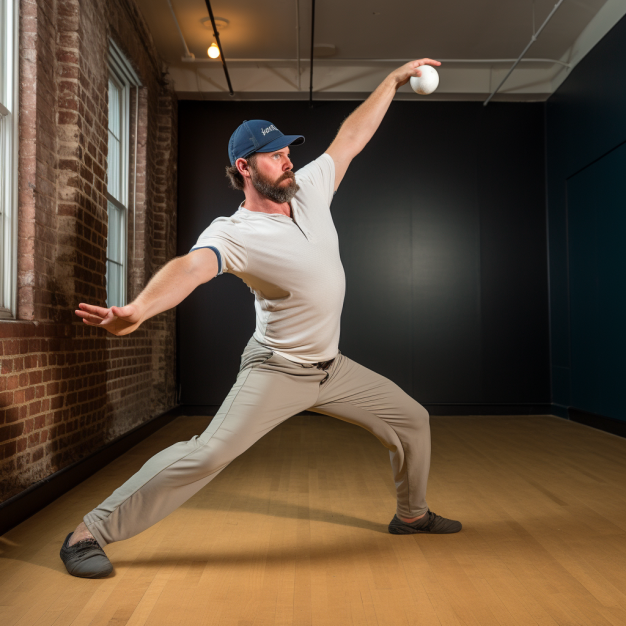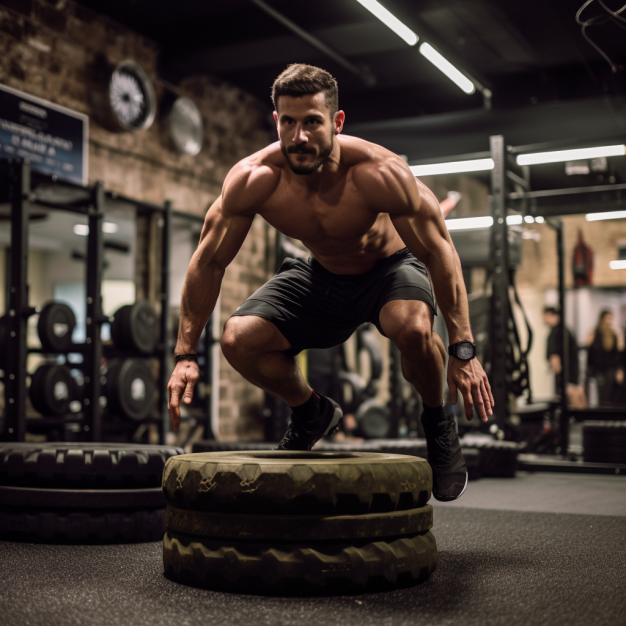In the realm of human achievement, the quest for excellence knows no bounds. We are driven by an innate desire to push our physical limits, reach new heights, and set records that stand the test of time. Whether you’re an athlete striving for victory, a fitness enthusiast looking to conquer personal goals, or an individual simply aiming to thrive in daily life, one factor emerges as the cornerstone of peak performance – muscle power.
Muscle power, the ability of our muscles to generate force rapidly, is the unsung hero behind extraordinary accomplishments. It’s the explosive energy that propels sprinters across the finish line, sends basketball players soaring toward the hoop, and empowers weightlifters to hoist seemingly insurmountable loads. Yet, it’s not limited to the realm of sports; it’s woven into the fabric of everyday life, influencing how we climb stairs, lift groceries, or recover from a stumble.
In this article, we embark on a journey to explore the dynamic world of muscle power. We’ll delve into the science that underpins it, unravel its significance in sports and fitness, and provide insights into how you can harness its potential to elevate your own performance and quality of life. Whether you’re an aspiring athlete, a dedicated fitness enthusiast, or someone seeking to maintain strength and vitality as the years roll on, understanding and optimizing muscle power will be your key to becoming faster, better, and ultimately, the best version of yourself.
Join us as we uncover the secrets of muscle power, unlock its potential, and discover how it holds the key to achieving new heights of physical excellence and vitality. It’s time to become Faster, Better.
The 6 Sections of Muscle Power for Peak Performance Stronger, Faster, Better
Section 1: Understanding Muscle Power
Section 2: The Importance of Muscle Power in Sports
Section 3: Training for Muscle Power
Section 4: Nutrition and Muscle Power
Section 5: Maximizing Muscle Power for Daily Life
Section 6: Case Studies and Success Stories
Section 1: Understanding Muscle Power
Muscle power, often overshadowed by its more famous cousin, muscle strength, is a force to be reckoned with in the world of physical performance. To maximize our muscle power, we first need to understand what it is and how it works.
1.1. Defining Muscle Power
Muscle power can be thought of as the dynamic force production of our muscles. Unlike muscle strength, which represents the maximal force a muscle can exert regardless of speed, muscle power focuses on how quickly a muscle or group of muscles can generate force. It’s the ability to apply strength rapidly, and this characteristic is vital in activities where speed and explosiveness are key.
1.2. The Role of Muscle Fiber Types
To comprehend muscle power, it’s essential to recognize the two primary types of muscle fibers at play:
- Slow-Twitch (Type I) Muscle Fibers: These fibers are more endurance-oriented and are used for activities requiring sustained effort, such as long-distance running or cycling.
- Fast-Twitch (Type II) Muscle Fibers: These are the muscle fibers primarily responsible for generating power. They contract rapidly and forcefully, making them crucial for activities that demand quick bursts of strength, like sprinting, jumping, and weightlifting.
Muscle power largely depends on the recruitment and coordination of fast-twitch muscle fibers.
1.3. The Science Behind Muscle Power
Muscle power is a product of both force and velocity. The science behind it can be explained by the concept of power output, which is measured in watts (W) and is calculated as:
Power=Force×Velocity
In practical terms, this means that increasing the force generated by a muscle or its contraction velocity will result in greater muscle power. To achieve this, specific training methods and exercises come into play, as we’ll explore in later sections.
Understanding the dynamics of muscle power lays the groundwork for its optimization. It’s not just about being strong; it’s about using that strength with precision and speed. In the next section, we’ll delve into why muscle power is a game-changer in the world of sports.
Section 2: The Importance of Muscle Power in Sports
When it comes to sports, muscle power is the hidden dynamo that separates champions from contenders. It’s the explosive force that propels athletes to excel in their respective disciplines. In this section, we’ll explore why muscle power is of paramount importance in the world of sports.
2.1. Acceleration and Explosiveness
In many sports, the ability to accelerate quickly and explosively can make all the difference. Sprinters burst out of the starting blocks, soccer players sprint to intercept the ball, and basketball players leap for those crucial rebounds. All these actions rely on muscle power to rapidly generate force and propel the athlete forward or upward.
2.2. Jumping and Aerial Dominance
Sports like basketball, volleyball, and high jump demand exceptional vertical leaps. Muscle power plays a pivotal role in these disciplines, allowing athletes to take flight, reach incredible heights, and outmaneuver opponents.
2.3. Agility and Quick Direction Changes
In sports such as tennis, football, and martial arts, rapid changes in direction can be game-changing. Muscle power enables athletes to swiftly pivot, change course, and respond to opponents’ movements, giving them a competitive edge.
2.4. Force Generation for Throws and Strikes
In sports like shot put, discus, and boxing, force generation is critical. Muscle power enables athletes to transfer maximal force to an object or opponent in a short period, resulting in powerful throws and strikes.

2.5. Sports-Specific Examples
Consider the sprinter, who must accelerate from a standstill to top speed in a matter of seconds, relying heavily on muscle power. Or the Olympic weightlifter, who must explosively lift a heavy barbell overhead. In gymnastics, power is evident in the velocity of flips and spins. These examples illustrate how muscle power is at the heart of athletic excellence.
2.6. Injury Prevention
Muscle power is not only about performance but also about injury prevention. Strong, powerful muscles provide better joint stability and support, reducing the risk of injuries during intense physical activities. Therefore, training for muscle power is not just for winning; it’s also for staying in the game.
In summary, muscle power is the unsung hero of sports, providing athletes with the explosive force needed to excel in their chosen fields. The ability to accelerate, jump, change direction, and generate force rapidly is often what separates champions from the rest. As we move forward in this article, we’ll explore how athletes and fitness enthusiasts can train to maximize their muscle power potential.
Section 3: Training for Muscle Power
Muscle power isn’t solely dependent on your genetic makeup; it’s a quality that can be cultivated and enhanced through targeted training. In this section, we’ll delve into various training methods and exercises designed to help individuals maximize their muscle power potential.
3.1. Power Training Principles
Before we dive into specific exercises, it’s crucial to understand the fundamental principles of power training:
- Explosive Movements: Power training focuses on explosive movements that demand rapid force generation. These movements often involve lifting, jumping, or throwing with maximal effort in minimal time.
- Plyometrics: Plyometric exercises, also known as jump training, are a cornerstone of power training. They involve quick, powerful contractions, such as box jumps, depth jumps, and bounding exercises, to develop explosive strength.
- Olympic Lifting: Olympic lifts like the snatch and clean and jerk are renowned for their ability to enhance muscle power. These multi-joint movements demand precise timing and coordination, making them effective for power development.
- Resistance Training: Traditional resistance exercises, such as squats, deadlifts, and bench presses, can also be adapted for power training by focusing on explosive concentric (lifting) phases.
- Speed of Movement: Power is the product of force and velocity. Therefore, training for muscle power often involves increasing the speed of movement while maintaining proper form.
3.2. Plyometric Training
Plyometric exercises are a cornerstone of power training due to their ability to enhance explosive strength. Some effective plyometric exercises include:
- Box Jumps: Jumping onto a box or platform from a standing position, focusing on the height and explosiveness of the jump.
- Depth Jumps: Stepping off a platform and immediately exploding upward upon landing, emphasizing the speed of the jump.
- Medicine Ball Throws: Throwing a medicine ball explosively against a wall or to a partner, involving the entire body in the movement.
3.3. Olympic Lifting
Olympic lifts are intricate and require proper coaching and form, but they are unparalleled in their capacity to develop muscle power. Seek guidance from a qualified coach when incorporating these exercises into your training regimen.
- Snatch: A lift where the barbell is lifted from the ground to overhead in one motion.
- Clean and Jerk: A two-part lift involving the clean, where the barbell is lifted to the shoulders, and the jerk, where it’s explosively pushed overhead.

3.4. Resistance Training for Power
Traditional resistance exercises can also be adapted to enhance power by focusing on explosive concentric phases. Here are a few examples:
- Squat Jumps: Performing a squat and then explosively jumping as high as possible at the top of the movement.
- Deadlifts with Speed: Performing deadlifts with lighter weights than usual but focusing on lifting them as explosively as possible.
3.5. Importance of Proper Form and Safety
It’s critical to emphasize that power training requires strict attention to proper form and safety. Due to the high-intensity nature of these exercises, the risk of injury can be significant if not executed correctly. Seek guidance from a qualified trainer or coach, especially when incorporating new or complex movements into your training routine.
Section 4: Nutrition and Muscle Power
Fueling your body with the right nutrients is not just about maintaining overall health; it’s also crucial for maximizing muscle power. In this section, we’ll delve into the significance of nutrition in muscle power development and provide insights into dietary choices that can help you harness your power potential.
4.1. Protein: The Building Block of Muscle Power
Protein is the cornerstone of muscle development, and it plays a pivotal role in maximizing muscle power. When you engage in power training and other high-intensity activities, your muscles experience micro-tears that need repair and growth. Protein provides the essential amino acids required for muscle recovery and growth, allowing you to build and repair muscle tissue effectively.
4.2. Carbohydrates: The Fuel for Explosive Efforts
Carbohydrates are your body’s primary energy source, especially during high-intensity, explosive activities. They provide the necessary fuel for muscle contractions and sustained effort. Complex carbohydrates, like whole grains and starchy vegetables, release energy slowly, ensuring a steady supply of fuel for your power workouts.
4.3. Timing Matters: Pre- and Post-Workout Nutrition
To optimize muscle power, consider the timing of your meals and snacks:
- Pre-Workout: Consume a balanced meal that includes carbohydrates, protein, and healthy fats a few hours before your training session. This ensures you have enough energy to perform explosively.
- Post-Workout: After your workout, your body is primed for nutrient absorption. Consume a protein-rich snack or meal within the first 30 minutes to two hours post-exercise to kickstart muscle recovery and growth.
4.4. Hydration: The Overlooked Key to Power
Staying adequately hydrated is often overlooked but is crucial for muscle power. Dehydration can lead to decreased muscle function, reduced strength, and impaired performance. Ensure you drink enough water throughout the day, and consider sports drinks for more extended, intense workouts to replenish lost electrolytes.
4.5. Micronutrients: The Support System
In addition to macronutrients (protein, carbohydrates, and fats), micronutrients like vitamins and minerals are essential for muscle function and overall health. Key micronutrients for muscle power include vitamin D, calcium, magnesium, and iron. A well-balanced diet rich in fruits, vegetables, and whole grains can help you meet your micronutrient needs.
4.6. Supplements: Proceed with Caution
While some athletes and fitness enthusiasts use supplements to enhance their performance, they should be approached with caution. Consult with a healthcare professional or sports nutritionist before adding supplements to your regimen. Often, a well-rounded diet can provide all the necessary nutrients for muscle power.
In summary, nutrition is a critical component of maximizing muscle power. A balanced diet that provides the right mix of macronutrients, timed appropriately around your workouts, will help fuel your power training and promote muscle growth and recovery. In the next section, we’ll explore how maximizing muscle power extends beyond the sports arena and positively impacts daily life.
Section 5: Maximizing Muscle Power for Daily Life
While muscle power is often associated with athletic performance, its benefits extend far beyond the sports arena. In this section, we’ll explore how harnessing and maximizing muscle power can significantly enhance your everyday life.

5.1. Functional Fitness
Functional fitness is all about being strong, agile, and capable of performing everyday activities with ease. Whether it’s carrying groceries, lifting a heavy suitcase, or simply getting up from a chair, muscle power is fundamental to these tasks. By training for muscle power, you can maintain the functional fitness needed to navigate daily life confidently.
5.2. Fall Prevention
As we age, maintaining muscle power becomes increasingly important for fall prevention. Strong, responsive muscles can help you react quickly to unexpected challenges, such as tripping or stumbling. In doing so, they reduce the likelihood of falls and the associated risk of injury.
5.3. Independence and Quality of Life
The ability to perform daily tasks independently is closely linked to muscle power. By maximizing your muscle power, you can retain your independence and enjoy a higher quality of life as you age. This includes the freedom to travel, explore new hobbies, and engage in social activities without limitations.
5.4. Energy and Vitality
Feeling energetic and vital is a direct result of having well-conditioned muscles. Muscle power contributes to overall vitality, allowing you to tackle your daily routines with enthusiasm and resilience.
5.5. Mental Health Benefits
Physical activity, including power training, has been shown to have numerous mental health benefits. Regular exercise, including power-focused workouts, can reduce stress, improve mood, boost self-esteem, and enhance cognitive function.
5.6. Aging Gracefully
Maximizing muscle power is not about defying aging but rather about aging gracefully. While we may not halt the aging process, we can certainly slow down its impact. Muscle power training can help maintain muscle mass, bone density, and overall physical function as you grow older.
Incorporating power-focused exercises into your regular fitness routine doesn’t just prepare you for specific sports or athletic goals; it equips you for the challenges and joys of daily life. By enhancing your muscle power, you’re investing in a future marked by strength, independence, and a higher quality of life.
As we conclude this section, we’ll transition to real-life case studies and success stories, highlighting individuals who have harnessed the power of their muscles to achieve remarkable feats, both in sports and everyday life.
Section 6: Case Studies and Success Stories
The power of muscle power isn’t just a theoretical concept; it’s a tangible force that has transformed the lives and achievements of countless individuals. In this section, we’ll delve into inspiring case studies and success stories of individuals who have harnessed the potential of their muscles to achieve remarkable feats in both sports and everyday life.
6.1. Olympic Sprinter: The Need for Speed
Meet Sarah, a dedicated sprinter with a dream of competing at the highest level. Sarah recognized the importance of muscle power in her sport, where fractions of a second can make all the difference. Through intensive power training that included plyometrics and strength exercises, Sarah honed her muscle power, enabling her to explode off the starting blocks with lightning speed. Her hard work paid off when she qualified for the Olympics and achieved her personal best, securing a spot on the podium.
6.2. Functional Fitness Success: Active Retirement
John, in his mid-sixties, decided that retirement didn’t mean slowing down. He understood the value of maintaining muscle power for everyday life. With a tailored fitness routine that focused on power training and functional movements, he not only retained his independence but also discovered a newfound passion for hiking. John’s journey demonstrates that age is no barrier to maximizing muscle power and living life to the fullest.
6.3. Overcoming Injury: A Comeback Story
Rebecca, a competitive gymnast, faced a setback when she suffered a severe knee injury. Determined to make a comeback, she embarked on a rigorous rehabilitation program that included power-focused exercises. By rebuilding her muscle power and agility, she not only returned to her sport but also achieved new heights, proving that resilience and muscle power can overcome adversity.
6.4. The Everyday Hero: Staying Independent
Michael, a retiree, realized that maintaining muscle power was essential for his independence. With a combination of resistance training, balance exercises, and a balanced diet, he continued to enjoy an active lifestyle. Whether it was helping his neighbors with yard work or keeping up with his grandchildren, Michael’s dedication to maximizing muscle power allowed him to remain the everyday hero in his community.
These case studies and success stories illustrate the transformative potential of muscle power in various aspects of life. From athletic achievements on the world stage to maintaining a vibrant, independent lifestyle in retirement, muscle power has a far-reaching impact. It’s a testament to the fact that regardless of your age, background, or starting point, you can harness the power of your muscles to achieve remarkable feats and lead a fulfilling life.
As we conclude this article, we leave you with the knowledge that muscle power is not just a physical attribute; it’s a source of strength, resilience, and boundless potential that can empower you to become the best version of yourself.
Conclusion:
- Summarize the key takeaways from the article.
- Reinforce the importance of muscle power in various contexts.
- Encourage readers to take steps to maximize their muscle power for a stronger, faster, and better life.
References:
- Include a list of credible sources and studies cited throughout the article.
This outline provides a structure for your article on maximizing muscle power for peak performance. You can expand on each section with relevant information, examples, and practical tips to create a comprehensive and informative piece.
frequently asked questions (FAQs)
What is muscle power, and how does it differ from muscle strength?
Muscle power refers to the ability of muscles to generate force rapidly, emphasizing the speed of contraction. Muscle strength, on the other hand, measures the maximal force a muscle can generate regardless of the speed of contraction.
Why is muscle power important in sports?
Muscle power is crucial in sports because it enables athletes to accelerate quickly, jump higher, change direction rapidly, and generate explosive force, all of which are essential for success in many sports.
Can muscle power be developed through training?
Yes, muscle power can be enhanced through specific training programs that include exercises and techniques designed to improve explosive strength and speed of movement.
What are some effective exercises for building muscle power?
Effective exercises for building muscle power include plyometrics (e.g., box jumps, depth jumps), Olympic lifting (e.g., snatches, clean and jerks), and resistance exercises with an emphasis on explosive movements (e.g., squat jumps, deadlifts).
How does nutrition impact muscle power development?
Proper nutrition, including an adequate intake of protein and carbohydrates, is essential for muscle power development. Protein supports muscle repair and growth, while carbohydrates provide energy for explosive efforts.
Is muscle power training only for athletes, or can it benefit the average person as well?
Muscle power training is beneficial for everyone, not just athletes. It helps improve functional fitness, reduces the risk of injuries, and enhances everyday activities, making it valuable for people of all fitness levels and ages.
Can muscle power training be integrated into a regular fitness routine?
Yes, muscle power training can be integrated into a regular fitness routine by incorporating power-focused exercises, such as plyometrics or explosive resistance training, alongside other strength and conditioning workouts.
Are there any risks associated with muscle power training?
Like any form of exercise, there are risks associated with muscle power training, such as overuse injuries or improper form. It’s essential to seek guidance from a qualified trainer or coach to ensure safe and effective training.
How does muscle power training benefit older adults?
Muscle power training is especially beneficial for older adults as it helps maintain muscle mass, bone density, and functional fitness. It can reduce the risk of falls and injuries, allowing older individuals to lead more independent and active lives.
Can muscle power be harnessed for mental well-being as well?
Yes, regular physical activity, including muscle power training, has been linked to mental health benefits, such as reduced stress, improved mood, increased self-esteem, and enhanced cognitive function.



0 Comments